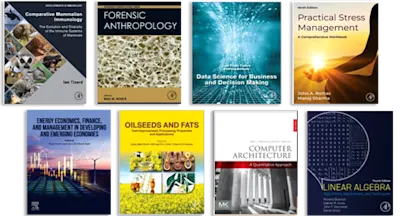
Aromaticity
Modern Computational Methods and Applications
- 1st Edition - May 14, 2021
- Imprint: Elsevier
- Editor: Israel Fernandez
- Language: English
- Paperback ISBN:9 7 8 - 0 - 1 2 - 8 2 2 7 2 3 - 7
- eBook ISBN:9 7 8 - 0 - 1 2 - 8 2 2 7 4 3 - 5
Evaluating the aromaticity of a molecular system and the influence of this concept on its properties is a crucial step in the development of novel aromatic systems. Modern co… Read more
Purchase options

Evaluating the aromaticity of a molecular system and the influence of this concept on its properties is a crucial step in the development of novel aromatic systems. Modern computational methods can provide researchers with a high level of insight into such aromaticity, but identifying the most appropriate method for assessing a specific system can prove difficult. Aromaticity: Modern Computational Methods and Applications reviews the latest state-of-the-art computational methods in this field and discusses their applicability for evaluating the aromaticity of a system.
In addition to covering aromaticity for typical organic molecules, this volume also explores systems possessing transition metals in their structures, macrocycles and even transition structures. The influence of the aromaticity on the properties of these species (including the structure, magnetic properties and reactivity) is highlighted, along with potential applications in fields including materials science and medicinal chemistry. Finally, the controversial and fuzzy nature of aromaticity as a concept is discussed, providing the basis for an updated and more comprehensive definition of this concept.
Drawing on the knowledge of an international team of experts, Aromaticity: Modern Computational Methods and Applications is a unique guide for anyone researching, studying or applying principles of aromaticity in their work, from computational and organic chemists to pharmaceutical and materials scientists.
- Reviews a range of computational methods to assess the aromatic nature of different compounds, helping readers select the most useful tool for the system they are studying
- Presents a complete guide to the key concepts and fundamental principles of aromaticity
- Provides guidance on identifying which variables should be modified to tune the properties of an aromatic system for different potential applications
1. Aromaticity in molecules and transition structures: from atomic and molecular orbitals to simple ring current models
2. Overview of the computational methods to assess aromaticity
3. Molecular geometry as a source of electronic structure of π-electron systems and their physicochemical properties
4. NICS—nucleus-independent chemical shift
5. Current density, current-density pathways, and molecular aromaticity
6. Quantifying aromaticity according to the energetic criterion
7. Aromaticity descriptors based on electron delocalization
8. The electron density of delocalized bonds (EDDBs) as a measure of local and global aromaticity
9. Conceptual density functional theory and aromaticity
10. Antiaromatic compounds: a brief history, applications, and the many ways they escape antiaromaticity
11. Cycloaromatization reactions
12. Baird aromaticity in excited states and open-shell ground states
13. Global aromaticity in 2D macrocyclic polyradicaloids and 3D fully conjugated molecular cages
14. Spherical aromaticity in inorganic chemistry
- Edition: 1
- Published: May 14, 2021
- Imprint: Elsevier
- Language: English
IF